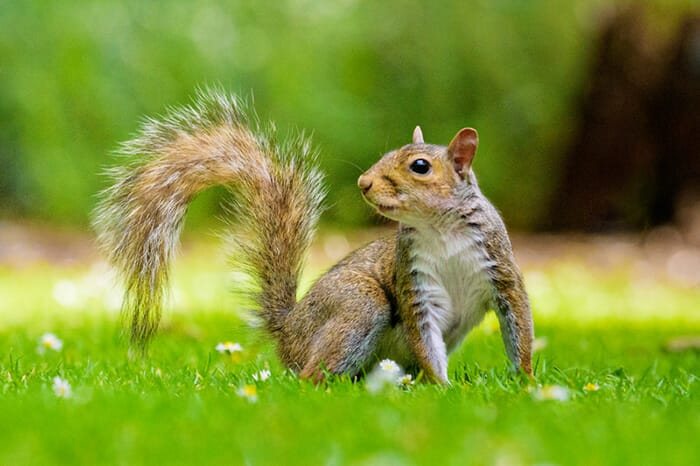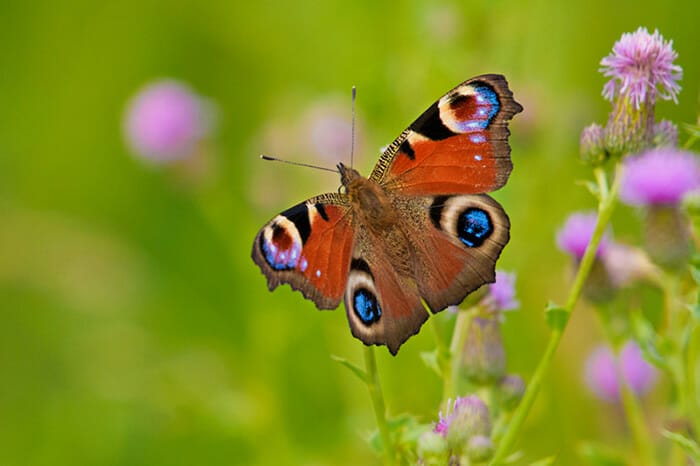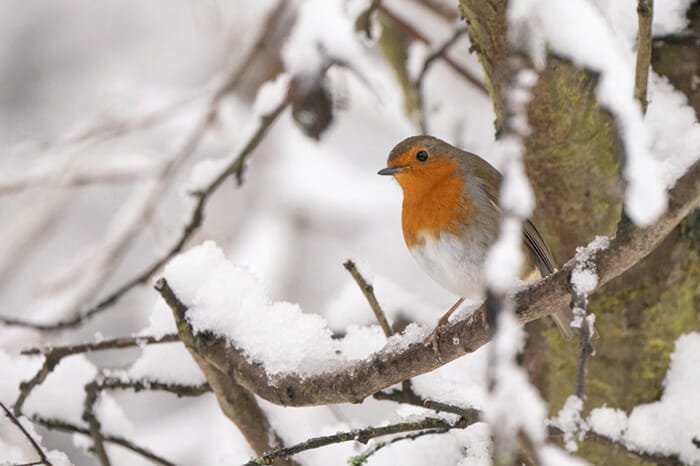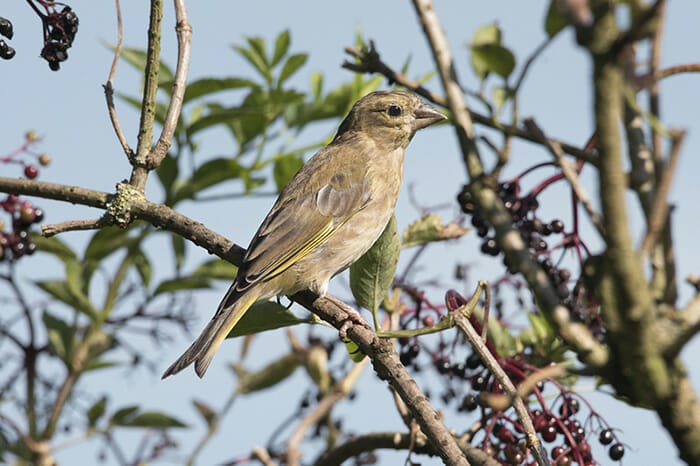Even though it is lovely to visit new places it’s not always necessary to travel further than your back garden to find interesting subjects to photograph. Your garden probably has a plethora of hidden gems right under your nose.
Therefore, in this article I’d like to give you some of my top tips for photographing wildlife in your garden across all the seasons.

First things first, we need to try and find the wildlife. For some this will be easier than others, you may have already spotted lots of colourful punters but for others, you may need to start looking in the right places.
Your most obvious visitors will be those hungry garden birds, but you may notice they are more frequent at certain times of the year, so it’s a good idea to be prepared to look out for some other species too. Knowing what happens in each season will give you a good indication of what you can find in your garden.
Spring is a wonderful time to get your camera out and get in the garden. Things are starting to warm up, flowers and trees are budding, and those sleepy hibernating animals are starting to come out and see what’s about.
You may be lucky enough to spot some hedgehogs, badgers start to become more active and you may even be lucky enough to see some baby foxes. Squirrels and many birds will be stocking up as they prepare to give birth so expect those feeders to empty super quick!
Queen bees that have survived the winter will now be busy looking for nectar and pollen and a new place to call home. Butterflies will be flittering from here to there bring flashes of colour to your garden.
If you have a pond, look out for that jelly-like stuff as toads and frogs will be breeding. You may even see some hoping about especially at night as they go from pond to pond. Migrating birds will start to appear giving you different species to look out for depending on where you live.

Most of us love summer, and for very good reason. The warmth on our skin can really make us feel more alive and ready to go and the same goes for your garden wildlife. Those hungry squirrels should now be showing their new babies how to jump and climb trees and mummy may even be preparing for her second round of pregnancy.
The same goes for those hungry hedgehogs, they should now be showing off their new hoglets and maybe preparing from round two. It’s a very busy time for spiders, bees, wasps, ants, beetles and butterflies with more and more emerging as the days go on, pollinating your flowers and eating up all those flower eating assassins.
Colourful insects will be pottering around including a wider variety of butterflies, damselflies, and dragonflies. And that frog span should now be tadpoles swimming around your pond and towards the end of summer little froglets hopping around.

Autumn is my favourite season in England, the light becomes more diffused leading to some wonderful opportunities early in the morning and on sunny evenings.
Migrating birds start to arrive from countries with harsher winters giving you the best opportunity to really work on your garden bird photography. But don’t forget about those hungry hedgehogs as they start really stocking up for their hibernation.
Even though badgers do not hibernate they don’t do too much over winter, so they’ll be stocking up their reserves too. You may not see many frogs around the pond anymore, but they’ll be somewhere in your garden feeding up in preparation for winter snooze.

Winter can be extremely hard for wildlife and your garden my feel much less inspiring. Many animals will be hibernating or will have massively reduced their activity. But don’t let that put you off! Your bird feeders will definitely be busy with regular and very thankful visitors.
Squirrels will be foraging and testing their memory skills for their buried nuts leading to some very comical expressions. Wrap up warm, put on lots of layers, make yourself a flask of hot tea/coffee and get out there for some truly seasonal shots!
Now you know what creatures to look for in which season, how do you actually photograph them?
In my experience the easiest way is to focus your attention on the food source. No matter what time of year or what species, food is what will make the animal come out into the open where you can photograph it.
Try to strategically position the food in a place that will look photogenic. For instance, moving a bird feeder away from a brick wall so the background is nice and clear. Moving the hedgehog food to an area that is surrounded by grass rather than flowerpots.
Or it may even be a matter of temporarily moving a few items out of the way, like that rake and bright red plastic watering can.

One of my key tricks is to try and keep out of sight. A lot of animals are not too keen on humans being close by and will not come out for food if the sense anything unusual that could potentially be dangerous to them.
Hide yourself away. The more hidden you are, the higher chance you have of seeing different species as some are not as brave as others. You could try hiding in your shed or using a pop-up hide. Depending on your garden layout, you may even be able to use your house and photograph out of an open window.
Click here to start our Wildlife photography course for beginners.

Camera settings will be different for everyone but it’s a good idea to set your camera to Auto Focus and use a high frame rate (sometimes called burst mode).
You will more than likely need quite a fast shutter speed for most of the animals, but this will vary massively depending on what the species is and what you would like your final image to look like.
It’s a good idea to really take your time and experiment with different angles, focal lengths, apertures, shutter speeds and iso. If you enjoy taking photos of things like butterflies and bees you may even want to try using a macro lens for some super close up detailed images.

Even though tripods are cumbersome and a bit annoying, they are worth their weight in gold when it comes to getting consistently sharp images, especially if you are using a long and heavy lens.
The extra stability they give your camera and lens will really help you nail those shots even when using a fast shutter speed. The tripod will also take the weight of the camera making your photographic experience a lot more enjoyable. You will be happier to stay and out shoot for longer periods of time.
If you have night visitors that you would like to photograph like foxes, owls and bats you may like to set up a camera trap and experiment with remote triggers. Be sure to check your lighting as we wouldn’t want to startle or affect the animals cover of darkness when hunting.
As we erect more and more buildings, we strip away valuable wild spaces and ecosystems. You really can help wildlife by doing a few simple things in your own garden which will bring more visitors for you to photograph, win, win!
1. Provide food. Check which food suits which species best and then put food out every day. This could be a bird feeder full of tasty seeds or some cat food for the hedgehogs.
2. Provide water. Every living creature needs water. If you don’t have space for a pond just fill up a shallow container with some rainwater. Make sure it has some little rocks in it so the smaller animals can get in and out safely.
3. Provide shelter. This could be as simple as piling up some dead leaves and branches in a small corner of your garden providing a great place for insects and frogs. If you’d like to take it a step further you could get or make a bird box, a hedgehog house and/or bug hotel.
4. Leave a small area of your garden wild. If you like everything to be neat and tidy you could fence this off. But leaving an area where the grass can grow tall and the dying foliage can lay, will create more food and habitats for invertebrates and moths.
5. Plant more wildlife-friendly flowers. We all love lots of colour in our gardens but some of the ornamental plants and trees we like have no value for wildlife. Plant things that produce fruit or berries for the birds or have wonderful flowers that are rich in pollen and nectar that can be easily accessed by bees and butterflies.
Whatever you decide to do, even the smallest thing could help and bring you lots of enjoyment.
So, get your camera out and get in your garden and don’t forget to share your images with us in the iPhotography member’s gallery!
Discover the BEST way on how to clean a camera sensor using swaps, rocket blowers and pencil brushes to give your shots a dust-free finish!
Capture the magic of the night with our beginner’s guide to night photography. Learn tips and techniques for stunning results.
Master the art of solar eclipse photography with expert tips on equipment, settings, and precautions for stunning celestial images.
Learn the basics of photography – fast – with our FREE 60-Second Photographer online course. Each class is short and sharp with simple, actionable steps that give you immediate results.
x 30 lessons

© iPhotography™
Become a confident and competent photographer in less than 30 minutes!
Before you leave, make sure you’ve secured your FREE online photography course (worth £29.99)
Each class is just 60-seconds or less making it the fastest and easiest way to learn photography!